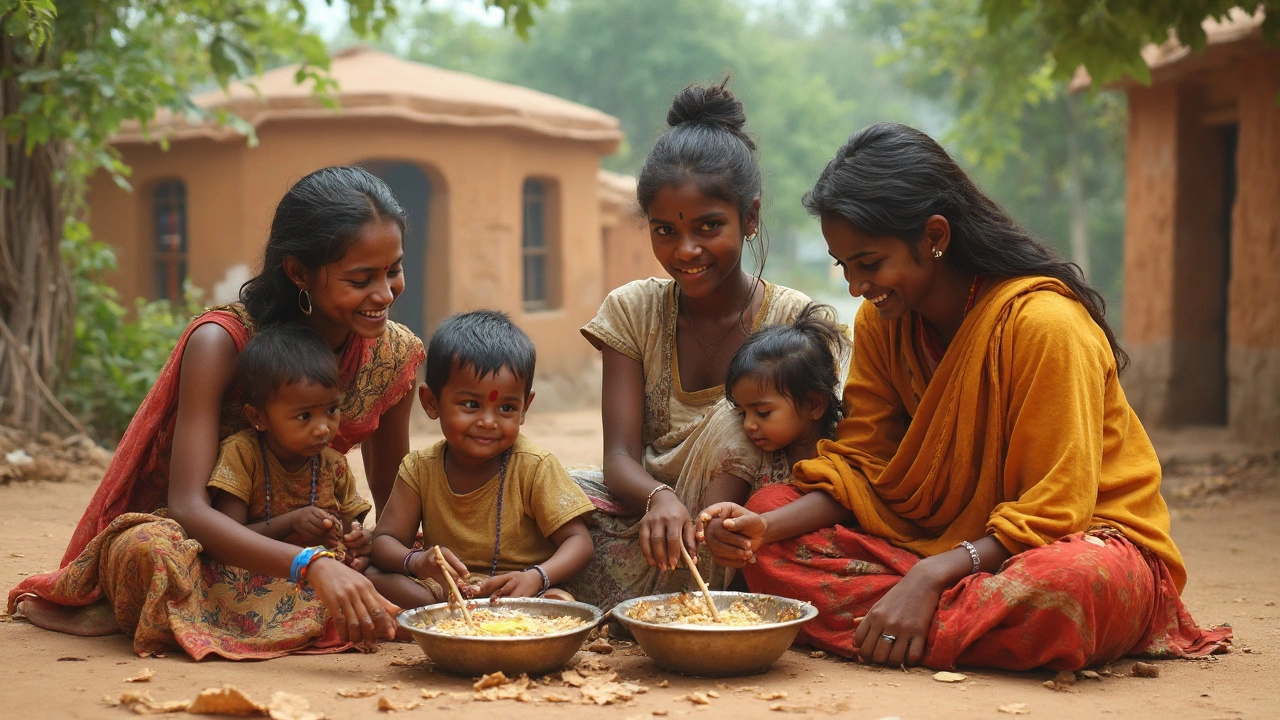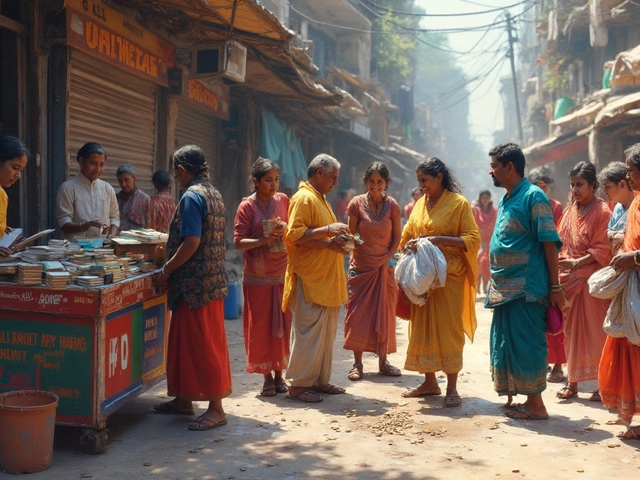If you had to bet who gives most to charity—the loaded or everyday folks scraping to get by—what’s your gut feeling? It’s tempting to picture luxury cars pulling up to exclusive gala events, mountains of donations flooding in from boardrooms and trust funds. But zoom out, and you’ll see giving isn’t so neat, and it’s full of surprises that poke holes in our snap judgments. A few years ago, I read a piece in The Economist comparing regular giving among households of all income levels. The numbers completely upended my assumptions. So let’s unpack this topic from every angle that matters: not just how much in dollars, but who sacrifices more, and what those stats mean for how we give.
Breaking Down the Numbers: How Much Do Different Groups Really Give?
The single most shared stat on this topic is from the US, but it lines up with trends in the UK, New Zealand, and Australia. Households with annual incomes in the bottom 20% consistently give away a higher percentage of their earnings than those at the top—sometimes two or three times as much, at least in percentage terms. Don’t believe it? Here’s the eye-opener: a 2023 Giving USA report found households earning under USD $30,000 gave away around 4.0% of their income to charity, while the richest (over $1 million income) gave only around 1.2% of theirs. That might sound tiny, but four percent of a food worker's income can be the difference between paying a bill and skipping dinner. For context, here’s a snapshot of household giving by income (North American data, but the patterns are similar in NZ and Australia):
| Income Bracket (USD) | Avg. % of Income Donated |
|---|---|
| Under $30,000 | 4.0% |
| $30,000 - $100,000 | 2.5% |
| $100,000 - $1M | 1.8% |
| Over $1M | 1.2% |
Okay, but let’s be real—someone with $1 million to spare, donating a mere one percent is still a much bigger cheque than a school cleaner giving four percent from a shoestring budget. In raw dollars, yes, the wealthy give the largest absolute sums. Think huge endowments, $100k silent auctions, those shiny donor plaques in hospitals. But for sheer sacrifice, the less wealthy hand over far more of what they have. Here in Wellington, I know families like the Ngatas in Newtown who quietly give a chunk of their weekend income feeding others at the local marae. It’s not a headline, but it moves the needle for their neighbors.
Ever wondered why? Psychologists at UC Berkeley ran a series of studies where they noticed people with lower incomes seemed more tuned in to the struggles of others. Maybe it’s the empathy muscle you build when you’ve been there yourself. They’re quicker to pitch in with a fiver for a GoFundMe or a caregiver meal. Middle-class folks tend to share time and effort, volunteering at schools or running community sports. High-net-worth individuals? They’re more likely to have their giving tied up in tax-exempt trusts, structured gifts, or the occasional eye-popping public donation, often with a PR boost to match. When you read billionaire headlines, remember—98% of giving in New Zealand is by non-wealthy Kiwis. Most of charity’s quiet backbone is built by everyday wage earners, not CEOs.
But let’s not just pit rich against poor. Giving also tracks with cultural background, religious participation, and personal life stories. Māori and Pacific households, for instance, are statistically more likely to donate goods, meals, or cash outside ‘official’ charities, much of it uncounted in formal reports. That invisible generosity adds up.

Why Motives Matter: The Psychology of Giving
So much for the numbers—why does anyone dig into their wallet in the first place? It’s not as simple as feeling flush or responding to guilt. Here’s where things get really interesting. Researchers from the University of Canterbury tracked Kiwi households over several years and found that small acts of giving weren’t always about spare change. Turns out, people with less money often see charity as a form of solidarity—lifting up those who are weathering storms they recognise all too well. My own mum was a single parent for a few years. Even at her lowest, she’d split half a pizza with the neighbours if they were struggling. The act of giving created connection, a sense of, “We’re all in this together.”
For wealthier folks, motivation can be more complicated. Some are deeply moved by specific causes—think arts endowments, environmental work, or medical research, often sparked by a personal story. But there can also be social pressure. Ever been to one of those charity balls where your name’s practically on display for your donation level? That’s a world away from a teenager shoving coins into a Cancer Society bucket outside New World. Not better, not worse, but it points to the why behind giving. Status, recognition, or tax relief matter more the higher up you go financially. You won’t see lawyers or executives posting about their anonymous gumboot donations on Facebook, either.
One of the best real-world examples comes from disaster relief. After 2011’s Christchurch earthquake, charities noticed an explosion of tiny donations—$5, $10, $20—mostly from people with little left over at the end of the month. These donations outnumbered the high-profile six-figure cheques from corporates by more than twenty to one. When people are close to the pain, influence is direct: they want to do something, even if it’s small. Wealthier donors tend to swoop in later, sometimes after staff or lawyers have assessed the impact. Both have their place, but the motives differ wildly.
And let’s be honest, most of us mix our motives. Sometimes we feel inspired, sometimes guilty. Sometimes we donate to honour a friend who’s passed away, or because a savvy kid like Lennon corners us with a well-rehearsed speech for the SPCA. Even little ones get hooked on the feel-good chemical rush—there’s hard science showing that giving time or money lights up the same reward centres in our brains as chocolate or a good laugh. If you want your kids to be givers, bring them along to deliver food parcels or tag along to a Soup Kitchen fundraiser. It sticks more than any speech.
Looks can deceive, though. Don’t assume the person dropping a tenner into a street appeal is less generous than your uncle who gives five grand at the end of the tax year. The first may mean skipping lunch. The second may scarcely notice it missing.

How to Give Effectively: Lessons for Everyday Generosity
Okay, now for the practical tips—for anyone thinking, "Where do I fit in, and how can my giving actually count?" Ignore all the noise about needing to wait until you’ve "made it" before giving back. The research and stories above suggest every little bit matters—often, smaller donations from people on lower incomes do more good, proportional to what’s sacrificed, than big-ticket gifts from the super wealthy.
First off, regular giving wins over big one-off splurges. When I set up an automatic weekly donation—even if it’s ten bucks—to the local women’s shelter, it means they can plan ahead, keep staff, and cover bills. A massive cheque out of the blue is great, but often, charities don’t know when it will come again. So, if you want to help, pick an amount you won’t miss and make it automatic. Trust me, you won’t regret it.
- Charity giving: Even skipping a latte a week can add up to $200 a year for a food bank.
- Give what you can, not what others expect. What matters is consistency and whatever you can spare without harming your stability.
- Combine cash with time. A lot of my friends with small kids bring them along to pick up rubbish or do “reverse trick-or-treating”—giving away baking to neighbours. It’s teaching generosity nearly for free.
- Check your charity. The Internet makes it easy to see which ones spend most on programs instead of admin or marketing. Look for detailed annual reports, transparent boards, public financials. Avoid those where less than 60% of funds actually reach people in need.
- Share stories, not just money. Tell friends and family why you donate or volunteer. Charity spreads by example, and it doesn’t always mean pulling out your wallet. If you’re short on cash, offer to cook, babysit, collect donations at school pick-up or join a community event.
- Tax smart giving. Depending where you live, some countries let you claim back a percentage of your donation on your tax return—up to 33% in New Zealand. Keep track and file that claim. More money for causes you love, less for the tax man.
- Don’t let perfection be the enemy of progress. Donating $2 is better than waiting to have $200 to spare. Small actions stack up when hundreds or thousands of people do them.
- Stay local, but think global. If you have a bit extra, mix it up—support your neighborhood, but also an international cause that’s close to your heart. Plenty of Kiwis sponsor kids abroad or donate to disaster relief alongside local tithing.
If there’s one myth to smash, it’s that big-time giving is only for the wealthy. The backbone of charity is—and always has been—built on small sacrifices by regular people. That’s what builds social trust. Take away grassroots donations and hands-on help, and even the biggest endowments from the rich wouldn’t plug all the holes.
One last thing: talk about your charitable choices, not to show off, but to normalise the idea that everyone, no matter how little you have, is part of the solution. My kids, Lennon and Seraphina, don’t remember the fancy fundraising balls, but they do remember handing out oranges after Sunday footie or baking slices for neighbours. The greatest lesson we can pass on isn’t how much we give, but that we give at all—and, most importantly, that it changes us as much as it changes the world we live in.






